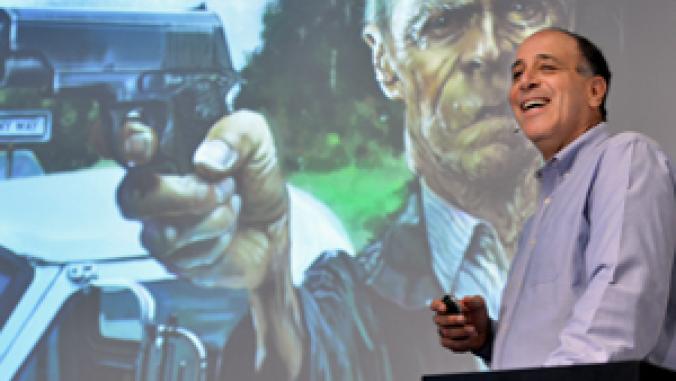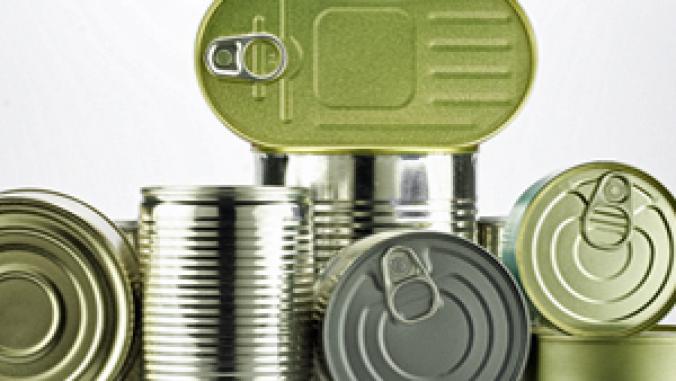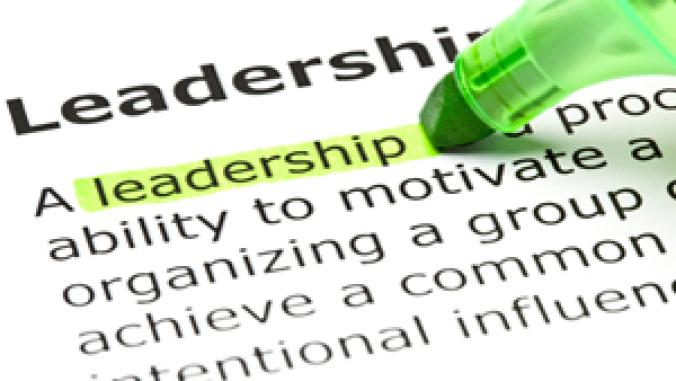IF11 Preview: Dorothea Seebode on Philips' Legacy of Innovation
<p>In the runup to GreenBiz Group's Innovation Forum 2011, Dorothea Seebode discusses Philips' 120-year legacy of innovation and how the global giant has built on that reputation despite sweeping changes in technology and consumer expectations.</p>

In the runup to our Innovation Forum 2011, we are conducting a number of interviews with presenters for the event that takes place October 11 to 13 in San Francisco.
At IF11 sustainable innovation expert Dorothea Seebode, who was senior director of sustainability at Philips Research for five years, will talk about strategies that enable companies to direct their innovation activities toward sustainable development.
In a pre-conference conversation, Seebode provided a behind-the-scenes look at the global company's approach to innovation. It was formalized with the establishment of Philips Research in 1914 and was soon followed by the launch of Philips Design in the mid '20s to conduct social-cultural trend research.
The two components helped the company keep in step with change, leading eventually to the pursuit of end-user driven innovation and the new challenge of sustainability-driven innovation.
Dorothea Seebode: The idea behind Philips Research has been from the very beginning to give scientists the space to explore what might be possible and then later in the business line to develop new technology, produce solutions, that provide a benefit to society. And because of that, Philips had a very strong patent position in these types of things. It became renown as an innovation driver. This paradigm worked very well until the beginning of the '90s.
Leslie Guevarra: What occurred 20 years ago?
DS: I think that a paradigm shift occurred. People [at Philips] started to recognize that technology did not sell itself anymore. It became very clear that technology fatigue emerged. Also, technology wasn't a key differentiator any longer because there were so many different companies that could provide the same functionality that [technology] would not provide a unique selling point.
So [Philips] then started to experiment with how to engage with the end user in order to bring really meaningful innovation to the market. In 1995, the Personal Care Institute was founded; and in the year 2000, the HomeLab. The HomeLab is an environment where real-life everyday users come in and interact with the development people to talk about the types of solutions that are required. Out of that interaction, successful innovations emerged -- for instance, the Ambilight television and built on that concept, the ambient hospital.
Similar interactions and the monitoring of emerging issues and social-culture trends led senior executives at Philips to develop the position of sustainability director in 2006.
DS: I got the special task to explore sustainability as an innovation driver and what that might mean for innovation in the future. Sustainability actually goes beyond the end user. If we want, in the future, to really provide sustainability-related products, then we need to complement the end-user perspective with societal needs and environmental needs.
LG: What's the most difficult thing about taking that approach?
DS: Generally speaking, I would say the biggest challenge is the mindset challenge. In our unconscious behavior, we are very much used to buying, using and throwing away. We also are very much accustomed to not using up but replacing a product that still could be used. So, in order to really change to something like a closed-loop economy ... everybody needs to contribute and everybody needs change their behavior, and that is quite tough.
Another big challenge is the business model. People are not used to, for example, service models or leasing models for commodities. I'll give an example. If you think through cradle-to-cradle, an approach could be in the future that you don't buy your television, you lease it.
You could have different types of leasing contracts. For instance, if you are a technology freak, you could go for something that every second year, you get the latest new technology and [the maker] takes back the older version. So you would never own your television, you would lease it like a car.
But this is a question of cultural acceptance. Most people would not want to lease a television because they like to own it. That's the reason why I said the mindset of the people and behavior change are the biggest challenges.
LG: What's your advice for long-established companies in any industry that are trying to stay ahead of tech developments and consumer demands and innovate in these challenging times?
DS: The first step would be to recognize that there is a sustainability challenge. We are all consuming ecological resources and we are not providing the type of solutions that make people happy, necessarily. Also a role of business, of course, is to give jobs to people so that they can maintain their livelihood. The whole way that businesses are organized is not really 100 percent keyed up to help people to meet their personal needs.
What I would then advise is that they [companies] use a framework for teaching sustainable development called The Natural Step in order to define what sustainability can mean for them.
I also think it is important to mention that moving toward sustainable innovation is really challenging for any organization. Sustainable innovation brings in a new paradigm, like the transition from analog to digital. Nobody should expect that it's easy to do, but on the other hand it can be really rewarding. What is very important here is to have a long-term perspective and be persistent.





